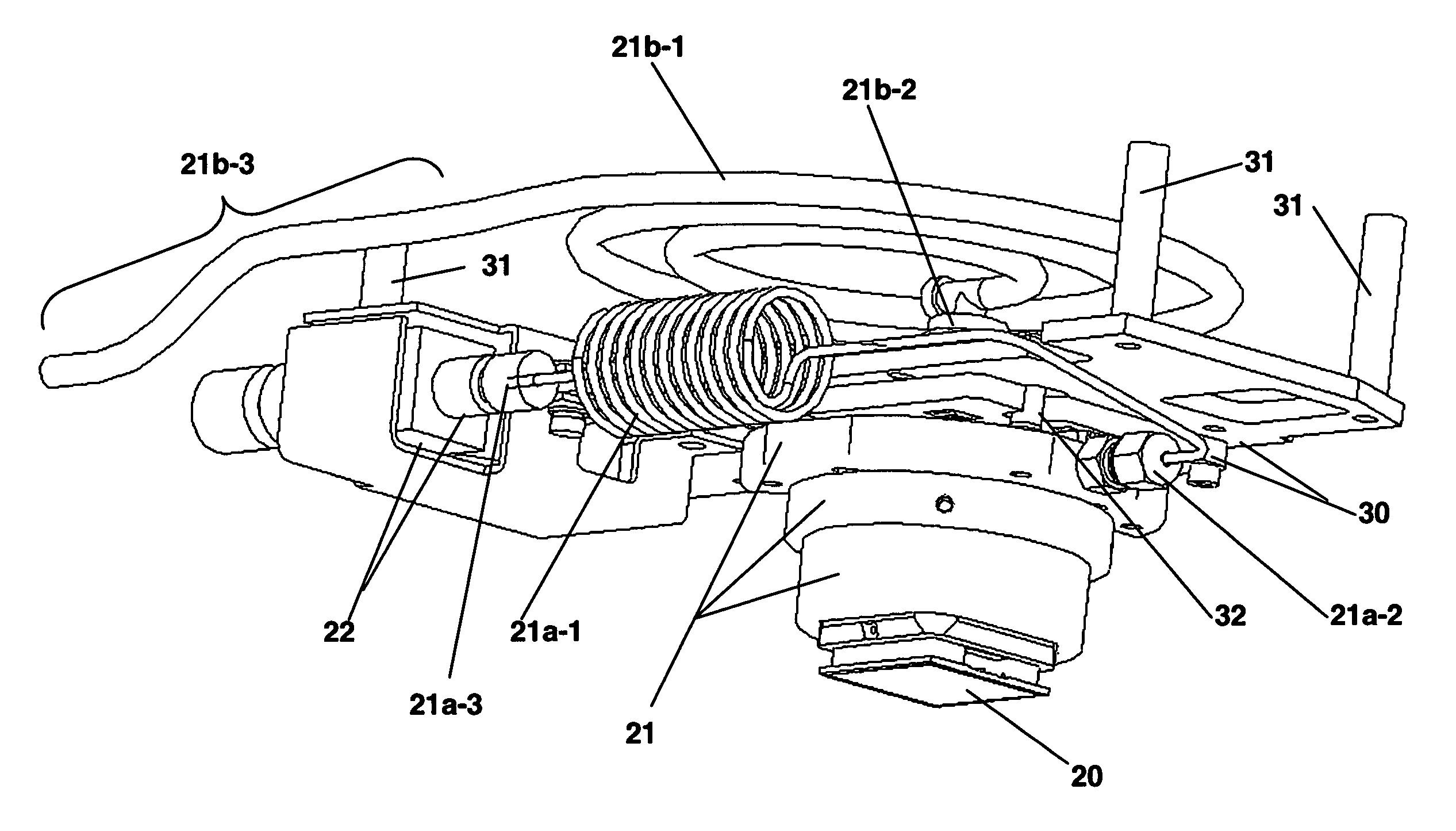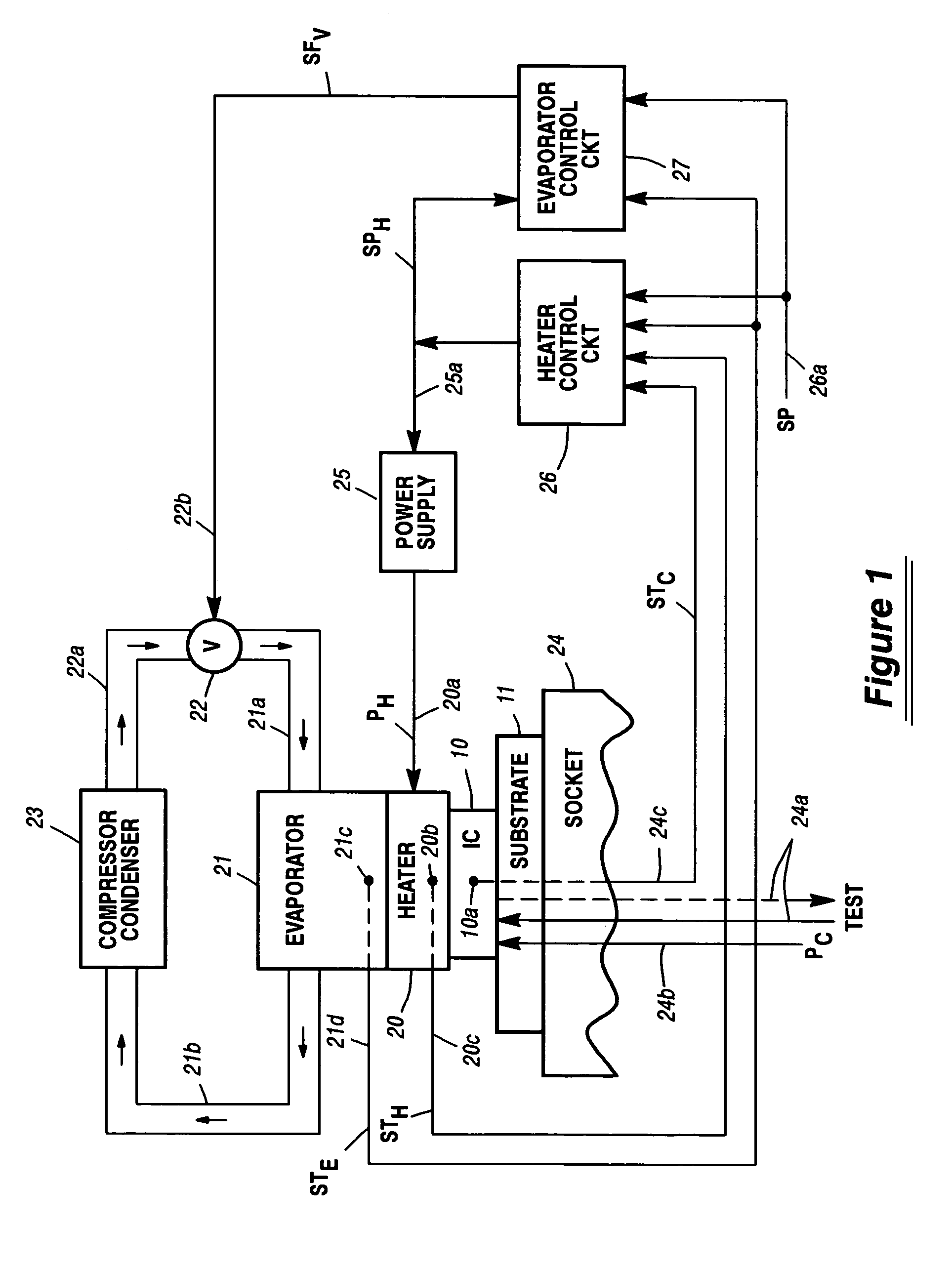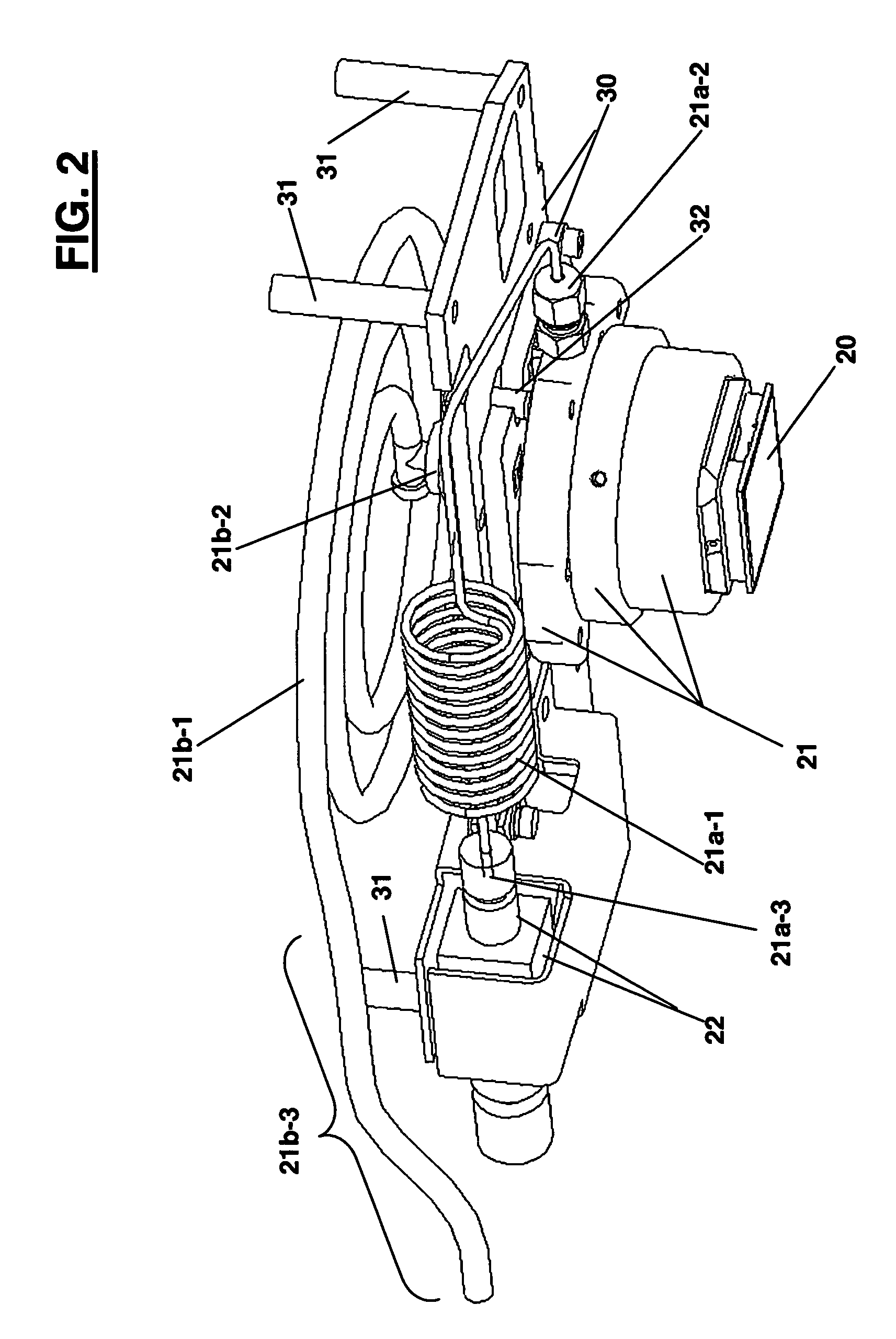Mechanical assembly, for regulating the temperature of an IC-Chip, having a gimbaled heat-exchanger with coiled springy conduits
a technology of mechanical assembly and heat exchanger, which is applied in the direction of indirect heat exchangers, lighting and heating devices, instruments, etc., can solve the problems of deformation of metal-walled tubing, inability of heat exchanger to regulate the temperature of ic-chip, etc., and achieve the effect of increasing the thermal resistance between the two faces
- Summary
- Abstract
- Description
- Claims
- Application Information
AI Technical Summary
Benefits of technology
Problems solved by technology
Method used
Image
Examples
Embodiment Construction
[0028]To begin this Detailed Description, reference should now be made to FIG. 2. There, a mechanical assembly is shown which is one preferred embodiment of the present invention.
[0029]In FIG. 2, item 20 is a physical implementation of the electric heater 20 that is shown schematically in FIG. 1. Also, item 21 in FIG. 2 is a physical implementation of the evaporator 21 that is shown schematically in FIG. 1. Further, item 22 in FIG. 2 is a physical implementation of the control valve 22 that is shown schematically in FIG. 1.
[0030]Items 21a-1, 21a-2, and 21a-3 in FIG. 2 together constitute a physical implementation of the input conduit 21a that is shown schematically in FIG. 1. Item 21a-1 is the central portion of the conduit 21a. This central portion 21a-1 is a tube which is coiled into a cylindrical spring. One end 21a-2 of this cylindrically coiled tube 21a-1 connects to an input port on the evaporator 21, and the opposite end 21a-3 connects to an output port on the control valve 2...
PUM
 Login to View More
Login to View More Abstract
Description
Claims
Application Information
 Login to View More
Login to View More - R&D
- Intellectual Property
- Life Sciences
- Materials
- Tech Scout
- Unparalleled Data Quality
- Higher Quality Content
- 60% Fewer Hallucinations
Browse by: Latest US Patents, China's latest patents, Technical Efficacy Thesaurus, Application Domain, Technology Topic, Popular Technical Reports.
© 2025 PatSnap. All rights reserved.Legal|Privacy policy|Modern Slavery Act Transparency Statement|Sitemap|About US| Contact US: help@patsnap.com



